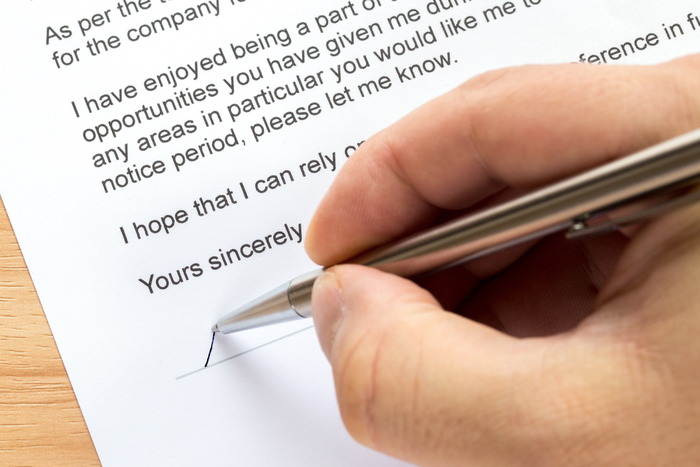How to Write a Resignation Letter That Doesn't Burn Bridges

Resigning from your job is often a difficult process, especially if you have worked with a company for a long period of time. One of the most challenging parts of this process is writing your official letter of resignation.
A resignation letter is a signed document that formalizes the specifics of your exit. Most often, it’s a letter that you provide to your manager, who in turn submits it to the Human Resources department at your company.
Before we delve into the details of what goes into the letter itself, let’s briefly talk about when and how to deliver to the letter. At the end of this article, you will find a template of an effective resignation letter that you can adapt as a foundation for your own letter of resignation.
Resignation Best Practices: When and How to Deliver Your Resignation Letter
Long-time employees build significant relationships with their managers, and their departure can have an emotional and professional impact on the company. During this transition period, you may also be personally experiencing a rollercoaster of emotions. To ease the transition for both yourself and others, it’s best to handle your resignation with emotional awareness and empathy.
It might be tempting to deliver your news via phone or, even worse, through email to alleviate the fear of confrontation during the conversation with your manager, particularly if your relationship with him or her is already strained.
However, I’d recommend scheduling an in-person meeting with your manager to inform them verbally of your decision to resign from your position. (For further details on what to say — and what not to say — during the meeting, see Thomas’ 7-step guide.)
At this meeting, you should hand-deliver the formal resignation letter.
How to Write a Respectful Letter of Resignation
A resignation letter should be a typed, physical document. As this is a formal communication, it should also be dated and signed. Your letter should be short and simple; I’d recommend keeping it no longer than a page.
Provide Pertinent Details of Your Exit
The letter's function is to communicate the news of your resignation in an impartial way, while also providing your employer with information regarding your last day of work. When determining your exit date, keep in mind that most companies request you provide at least two weeks’ notice.
Thank Your Employer
The letter should also express positivity toward your time with the company. You may want to indicate that you enjoyed the work you did in the position, the experience you gained, and the mentorship your manager provided.
The letter should not burn bridges by airing grievances. If you’re leaving a particularly toxic work situation, it may feel difficult to summon any gratitude; In that case, a brief word of thanks for the opportunity provided at the company will suffice.
Whether you’ve relished the job or are desperate to leave, now is not the time to wax poetic about a better opportunity. Avoid revealing your future plans to your former company, particularly in writing.
Indicate Your Continued Work Ethic
Lastly, the letter should demonstrate your commitment to making the transition as smooth as possible. In written communication — including not only the formal resignation letter but also any emails you may send regarding the transition — you don’t need to go into detail on what this transition will involve, but you will want to execute a thorough handoff and train your replacement, if applicable.
Resignation Letter Checklist
- At the top of the letter, include the date on which you’re delivering it to your manager.
- The letter should be written to your manager, but keep in mind that it may likely be duplicated and submitted to Human Resources.
- State that you are formally resigning from your position with the company.
- Provide the exact date of your last day of work.
- Express gratitude for the opportunity you had to work at the company.
- Assure that you will help make the transition smooth.
- Include your full name as well as a signature.
Resignation Letter Template
Below is an example of what a resignation letter should look like:
Dear [supervisor’s name],
The purpose of this letter is to inform you of my decision to resign my position with [company], effective immediately. My last day of work will be [date]. I have accepted another position which will be a positive career move for me.
I have enjoyed the time here at [company] and will cooperate fully to ensure a smooth transition over these next two weeks.
Sincerely,
[signature]
[printed name]
Image Credit: Image courtesy of BeeBright / Shutterstock

